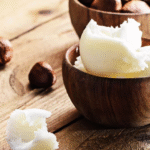For centuries, homemade butter has been a staple in traditional kitchens, loved for its rich taste and health benefits. With the growing interest in fresh, unprocessed foods, many people today are rediscovering the art of making butter at home. One of the most asked questions is how to make butter from raw milk—a process that may seem complicated but is actually quite simple once you understand the steps. In this guide, you’ll not only learn how to make raw milk butter with ease, but also gain tips on storage, uses, and even where to buy raw butter if you prefer convenience.
Whether you’re using a churn, stand mixer, or just a mason jar, this comprehensive tutorial will walk you through everything you need to know about transforming raw milk into creamy, delicious butter at home.
Why Make Butter from Raw Milk?
Before we dive into the step-by-step process, let’s understand why many homesteaders, health enthusiasts, and natural food lovers prefer butter made from raw milk:
-
Nutritional Value: Raw milk retains enzymes, beneficial bacteria, and fat-soluble vitamins such as A, D, E, and K that are often diminished during pasteurization.
-
Flavor: Butter made from raw milk has a deeper, creamier flavor compared to store-bought versions.
-
Purity: When you make your own raw butter at home, you control the quality of milk, ensuring no unnecessary additives or preservatives are included.
-
Tradition: Homemade butter carries the nostalgia and satisfaction of creating food the way our ancestors did.
With that said, let’s explore how do you make butter from raw milk using simple and tested techniques.
Step 1: Sourcing Raw Milk
The foundation of good butter is top-quality raw milk. If you’re wondering where to buy raw butter or raw milk, the best option is usually a local farm, farmers’ market, or a trusted raw milk co-op in your state. Some organic dairies also deliver fresh raw milk directly to your door. Always ensure your milk comes from grass-fed cows, as this not only enhances the flavor but also boosts the nutritional content of the butter.
Pro tip: Make sure your milk is fresh and unprocessed. Using the cream layer from older raw milk (2–3 days) often yields creamier butter.
Step 2: Separating Cream from Raw Milk
The process of making butter relies on fat, so the first step is to separate cream from raw milk. Here’s how you can do it:
-
Refrigeration Method: Store your raw milk in a wide-mouthed jar in the refrigerator for 12 to 24 hours. The cream will naturally rise to the top. You can then skim it off with a spoon or ladle.
-
Cream Separator: If you plan to make large batches regularly, investing in a cream separator device can save time and effort.
The cream you collect is the base ingredient for butter, so handle it carefully and store it in clean jars until you have enough to churn.
Step 3: Letting the Cream Rest
Before churning butter, let the cream rest at room temperature for 12–24 hours. This process, known as culturing, enhances the flavor of the butter, giving it a tangy, rich taste. If you prefer a sweeter, milder butter, you can skip this step and churn the cream straight from the refrigerator.
Step 4: Churning the Cream
This is the most exciting part of learning how to make butter with raw milk. Churning separates butterfat from buttermilk, transforming liquid cream into golden butter. Here are some common methods:
-
Stand Mixer or Hand Mixer: Pour the cream into a mixing bowl and beat on medium speed. After a few minutes, the cream will thicken into whipped cream, and eventually, the butterfat will separate from the liquid.
-
Blender or Food Processor: This method is faster. Blend the cream until you see clumps of butter forming and separating from the buttermilk.
-
Mason Jar Method: If you don’t have equipment, fill a mason jar halfway with cream, close the lid tightly, and shake it vigorously for 10–15 minutes. You’ll see the butter separating inside the jar.
-
Traditional Butter Churn: For an old-fashioned approach, use a churn. Though slower, it produces a nostalgic experience and delicious results.
Step 5: Straining the Buttermilk
Once the butter has formed, pour the mixture through a fine strainer to separate the liquid buttermilk from the butter solids. Do not discard the buttermilk—it can be used for baking or marinating meats.
Step 6: Washing the Butter
This step is critical. Butter needs to be rinsed thoroughly under cold water to remove excess buttermilk, which can cause it to spoil quickly. Massage the butter with clean hands or use a spatula to press out any remaining liquid. Keep washing until the water runs clear.
Step 7: Adding Salt or Flavor
At this stage, your butter is almost ready. You can leave it unsalted for pure flavor, or add a pinch of sea salt for enhanced taste and preservation. Some creative home chefs also add herbs, honey, or garlic for flavored butter variations.
Step 8: Storage
Store your freshly made butter in an airtight container. If kept in the refrigerator, it will last about 1–2 weeks. For long-term storage, freeze the butter in small portions, where it can last up to six months without losing flavor.
Benefits of Homemade Raw Butter
Making butter at home offers several benefits:
-
Fresher taste and aroma compared to store-bought.
-
Cost-effective in the long run if you source milk directly from farms.
-
Healthier and free from artificial stabilizers.
-
Customizable—you can flavor your butter however you like.
Safety Precautions When Using Raw Milk
It’s important to note that raw milk is unpasteurized, which means it may contain bacteria if not sourced and handled properly. Always buy raw milk from trusted farms that maintain strict hygiene and animal welfare standards. If you are new to raw dairy, consult your healthcare provider before regular consumption.
Alternative: Where to Buy Raw Butter
If you’re short on time or don’t have access to raw cream, you may be wondering where to buy raw butter. Look for:
-
Specialty organic food stores.
-
Farmers’ markets.
-
Local dairy co-ops.
-
Online raw dairy suppliers.
One reliable source for checking availability of raw dairy products is Weston A. Price Foundation, which lists trusted farms and suppliers across different regions.
Common Questions
1. How to make butter from raw milk quickly?
Use a food processor or blender for the fastest method, as it churns cream in just a few minutes.
2. Do I need to pasteurize milk before making butter?
No, pasteurization is not necessary if your raw milk comes from a safe and trusted source.
3. Can I use goat milk instead of cow milk?
Yes, goat’s milk can also be used, but the yield might be lower due to its naturally smaller fat globules.
Read More: What is Raw Shea Butter? Benefits and Uses
Final Thoughts
Learning how to make raw milk butter is a rewarding skill that connects you to traditional food-making practices. It’s simple, cost-effective, and the taste is unmatched. Whether you enjoy it fresh on bread, melted over vegetables, or incorporated into your favorite baked goods, butter made from raw milk has a special richness that industrial options cannot match.








